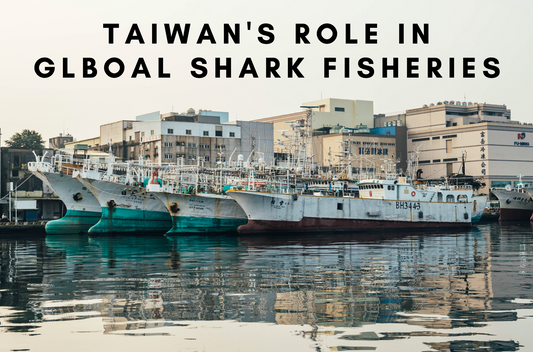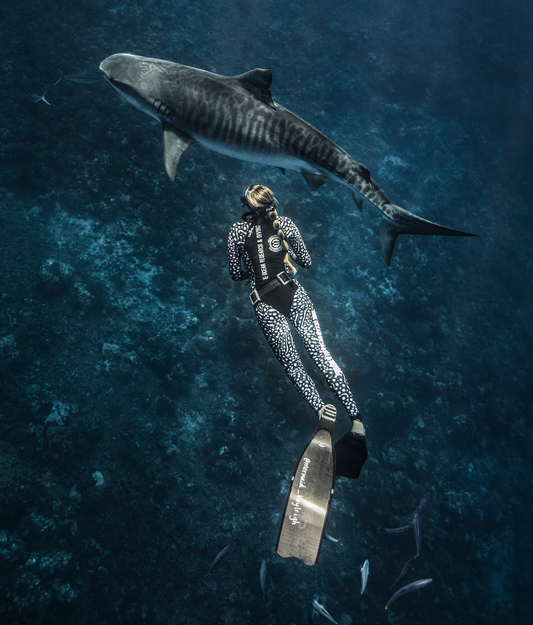Why You Should Not Swim with Whale Sharks in Oslob, Philippines.
WHY YOU SHOULD NOT SWIM WITH WHALE SHARKS IN OSLOB, PHILIPPINES.
Swimming with whale sharks is a unique and incredible experience. Oslob, Cebu of the Philippines has become a well-known spot for swimming with whale sharks and getting that Instagram shot. What you don't see on Instagram, is the negative effect this tourism industry is directly having on the whales sharks of Oslob.
Below is a list of reasons explaining why you should not swim with whale sharks in Oslob:
UNWANTED TOUCHING
Whale sharks are a protected species in the Philippines. The IUCN classifies them as an endangered species. Several codes of conduct exist to protect whale sharks during human interaction. Unfortunately, in Oslob, these codes are often not respected. When you’re swimming with whale sharks, there is no barrier between you and the shark. A lot of people take this as an opportunity to touch the animal. The constant high density of tourists in the water is bound to make some collisions. Apart from unavoidably swimming into hoards of tourists, the whale sharks often rub up against the feeding boats. The sharks carry the cuts and scrapes and scars from the sharp edges and barnacles to prove it.

POOR NUTRITION
The feeding of whale sharks in Oslob is a key issue. Local boat tour owners feed the whale sharks sergestidae prawns, locally known as uyap. Getting hand-fed encourages the sharks to come back every day. Why say no to an easy meal, right? But like with us, our diet cannot consist of only one food. Although uyap is filled with nutrients, a whale shark’s diet needs to be far more diverse. The sharks severely lack diversity and thus nutrients because their only food source is the constant feeding of uyap. There has been a huge increase in health issues noticed among the whale sharks who visit Oslob frequently.
HARM FROM BOATS
We know that feeding is a problem now. It gets worse. The feeding of whale sharks in Oslob is teaching whale sharks that boats and humans mean food. Whale sharks don’t discriminate: they cannot see the difference between boats. Engine-driven boats are still used in the Oslob area. One particular Oslob whale shark named Fermin; swam into the propeller of an engine boat. He's got more than a couple of nasty scars along his mouth and eyes. Not all sharks live to tell the tale. You see, in an area where shark fishing is still an issue, whale sharks are taught to go up to any boat. This has gotten and will continue to get them killed.

DISRUPTED MIGRATION
Whale shark tourism in Oslob obstructs the animals’ migration pattern. Sharks follow their food. Mr. Bean; one particularly well-fed Oslob shark, stayed a committed 392 days in Oslob. He did not have much of a chance to practice his mating calls to the females that followed their food elsewhere amongst the whale sharks natural migration route. As I said, whale sharks are an endangered species. On top of that, research on the reproduction of whale sharks is limited. So, it is essential that the Oslob sharks migrate and get a little practice in the most fun part of biology. Swimming with whale sharks in Oslob has direct repercussions for their reproduction and overall survival.
Sharing the ocean with these gentle giants is an exhilarating experience, just make sure you do it responsibly. A natural, unforced encounter with a whale shark is best. If you are keen to get in the water with whale sharks in the Phillippines, go to Donsol! Donsol lies in the Bicol region of Luzon in the north of the Philippines. The Bay is naturally rich in plankton and krill, the main food source of whale sharks. There is no need, and thus no feeding of whale sharks in Donsol. The whale sharks come back here to feed naturally, birth their young and breed year after year. Because there is no forced feeding, Donsol remains just a stop on the whale sharks’ instinctive migration route. Much better than Oslob. Following their migration does mean they won’t be here all year. Lucky you, we know the best months. The best time of year to see whale sharks in Donsol is between December - May.
The Donsol eco-tourism initiative is led by the WWF. It is set up and monitored by marine conservation experts. Rules and limitations are in place early to create a sustainable tourism operation. One that is as beneficial to the Whale Sharks as it is to the humans profiting from them.
A final quick tip if you’ve got your camera on you while you’re swimming with the whale sharks in Donsol. Without flash, take a photo of the left fin and send it to local researchers. They can track the migration patterns of the local sharks through photo identification. Instead of hurting, you just helped a whale shark. Thank you.
Written by: Constance Van Rheenen




